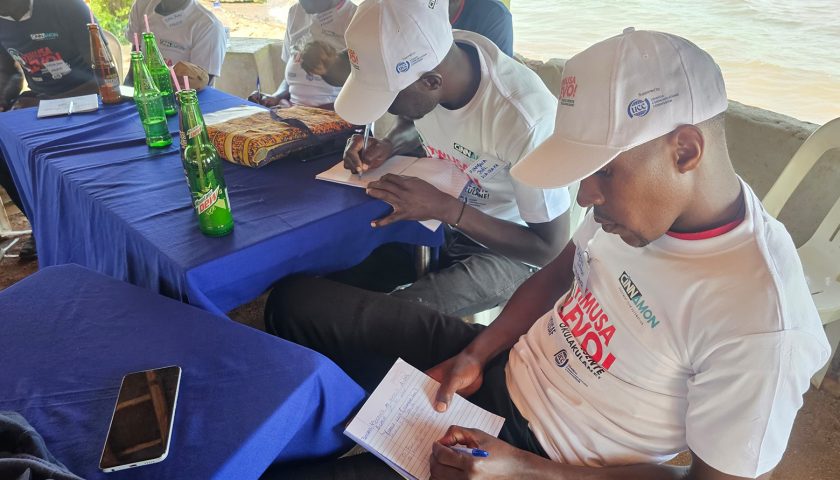The government has run out of aerial spray chemicals to fight desert locusts.
The shortage has come at a time when authorities have confirmed a third wave of locust invasion.
Reports indicate that two swarms reportedly entered the country on Monday through Rupa, Moroto and Kakamongole in Nakapiripirit districts.
Lt. Col (Rtd) Bright Rwamirama, the Minister of State for Animal Industry confirmed the invasion and chemical shortage on Tuesday. This brings the total number of districts under the invasion swarms of deadly desert locusts to 24 after their first entry into Uganda was reported in February.
He says however that the new swarms are for old locusts that are less harmful. Rwamirama, however, warned the population against eating locusts.
Rwamirama emphasizes that the chemicals are still dangerous and that people should stay away from the locusts which are dead.
Despite government efforts to curb the deadly insects on ground, they have spread to other districts including; Kotido, Amudat, Abim, Otuke, Napak, Katakwi, Amuria, Soroti, Ngora and Kumi districts. Also affected are Nakapiripirit, Nabilatuk, Moroto, Kaabong, Karenga, Bukedea, Bukwo, Kween, Agago, Kitgum, Lamwo, Pader among others.
The locusts entered the country after ravaging several parts of Kenya, causing food shortages.
The government notes that they have had no incidents of damage caused by the locusts.
According to Rwamirama, there is only one aircraft, from the Desert Locust Control Operational Base in Nairobi which is operating for spray while another UPDF chopper is mainly for doing aerial surveillance.
“What is at stake is that we don’t have the chemical for aerial spraying and so one of the aircraft supposed to be used not functional as of now. But we have the chemical for ground spray. The other aircraft will be operating once the chemical comes and it will also depend on whether we need it or not,” Rwamirama.
He, however, said they are yet to receive another consignment of Fenitrothion, an insecticide from Japan, where they are currently importing the chemicals from.
On February 29, 2020, one Swarm of desert locusts invaded Uganda crossing from Kenya through Lorengedwat in Nabilatuk and settled at Matany in Napak; covering nearly 10 square kilometres.
Since the invasion, Rwamirama says government has in response set up a number of interventions to ensure minimal impact of desert locusts on food security and livelihoods of communities in affected districts. Already, a total of 1700 people fighting these locusts on ground, including the UPDF.
“An aerial spraying aircraft from the Desert Locust Control Operational Base was deployed in Moroto-Karamoja sub-region to conduct trans boundary aerial spraying/ control to suppress the potential of invading swarms from Turkana area into the country,” Minister Rwamirama says.
According to Rwamirama, ground spraying of Desert Locusts is still ongoing by of officers of Uganda People’s Defense Forces (UPDF), based on surveillance information.
“The ground spraying has been successful in suppressing the mature Desert Locust swarms thus cutting off the laying of eggs that would have resulted into a bigger population of locusts,” he contends.
URN.




